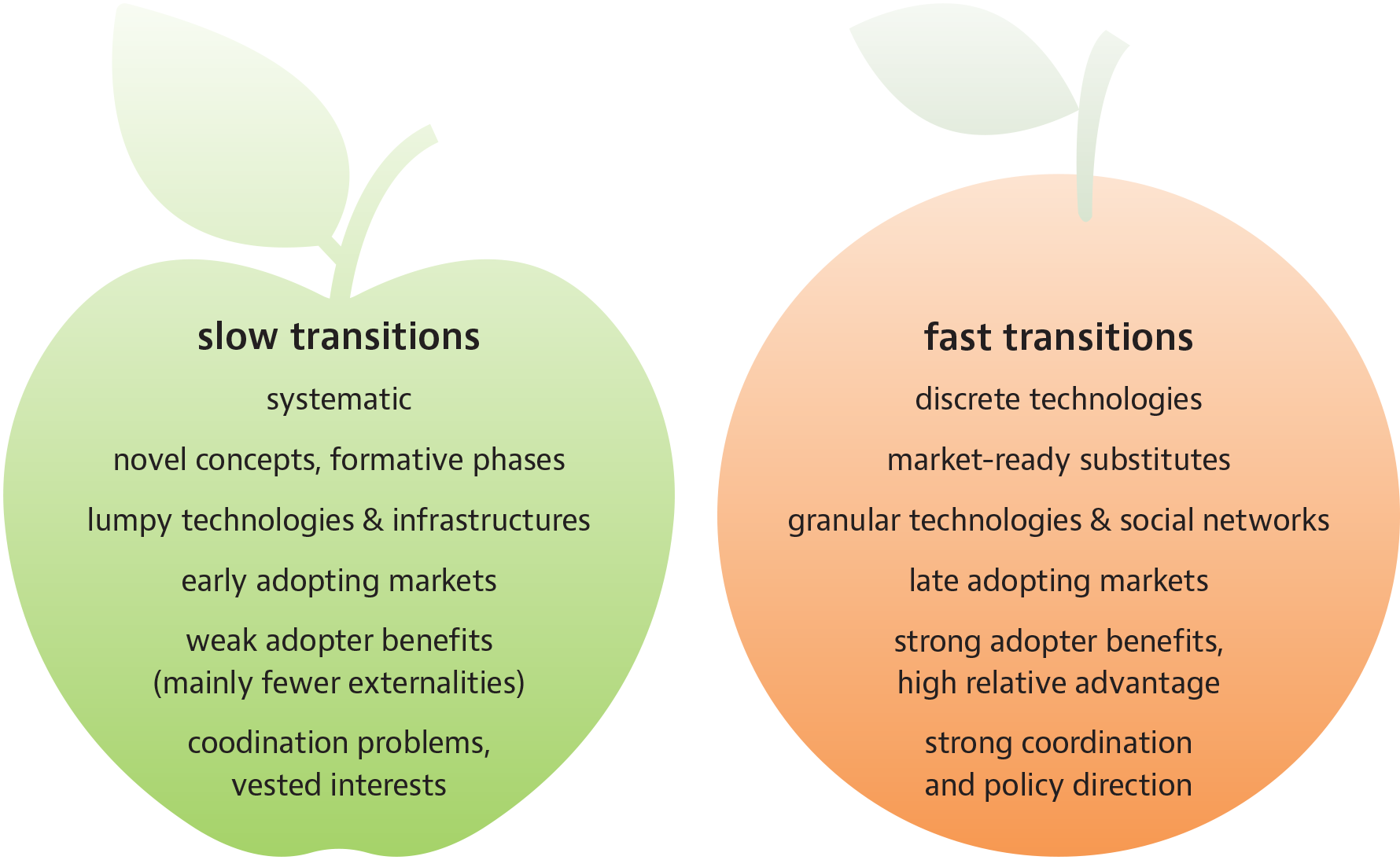How to make fast transitions to sustainable pathways
Why do some societal and technological transitions happen relatively rapidly, in a decade or two, while others take a century? This question is vital, since achieving the UN Sustainable Development Goals (SDGs) and meeting climate targets will require rapid transitions to sustainability. In a 2016 review paper, the IIASA Transitions to New Technologies Program set out to find the answers.
There is a mismatch between the ambitious timing of the SDGs—which call for major transformational change within a few decades—and the historical evidence, which shows comparable transformative changes have taken up to a century.
A novel taxonomy of determining factors that can explain differences in transition speeds between different transition processes and technological systems (“apples” and “oranges”), which also suggests innovation and policy options for accelerating the much-needed transitions towards sustainability.
The IIASA review paper, published in the journal Energy Research and Social Science, was the first to propose a systemic taxonomy of determining factors that can explain why certain transitions happen fast (one to two decades) whereas others proceed slowly (several decades up to a century) [1].
Fast transitions tend to have, among other things, strong coordination and policy direction, along with substantial benefits for adopters. The characteristics of slower transitions include weaker adopter benefits and poor coordination, along with vested interests (see figure for full lists).
The new systemic taxonomy helps to explain differences between “apples” and “oranges”, in other words completely different processes and technological systems that cannot be compared without all other things being equal. The findings also provide useful insight for crafting policies and novel technology system configurations to accelerate the multiple social, institutional, and technological transitions needed for the transition to sustainability.
This research integrates a number of novel research streams conducted within the Transitions to New Technologies Program, including work on the development phases of technological innovation; agent-based modeling of technological interrelatedness and complexity; social network and peer effects; and spatial spillover effects in the international diffusion of new technologies [2][3][4].
References
[1] Grubler A, Wilson C, & Nemet GF (2016). Apples, oranges, and consistent comparisons of the temporal dynamics of energy transitions. Energy Research & Social Science 22: 18-25.
[2] Bento N (2016). Calling for Change? Innovation, diffusion, and the energy impacts of global mobile telephony. Energy Research & Social Science 21 (1): 84-100.
[3] Bento N & Wilson C (2016). Measuring the duration of formative phases for energy technologies. Environmental Innovation and Societal Transitions 21: 95-112.
[4] Leibowicz BD, Krey V, & Grubler A (2016). Representing spatial technology diffusion in an energy system optimization model. Technological Forecasting and Social Change 103: 350-363.
IIASA contributors
- Arnulf Grubler
- Charlie Wilson
Collaborators
- Gregory Nemet, University of Wisconsin–Madison, USA
- Nuno Bento, Centro de Estudos sobre a Mudança Socioeconómica e o Território, Portugal

